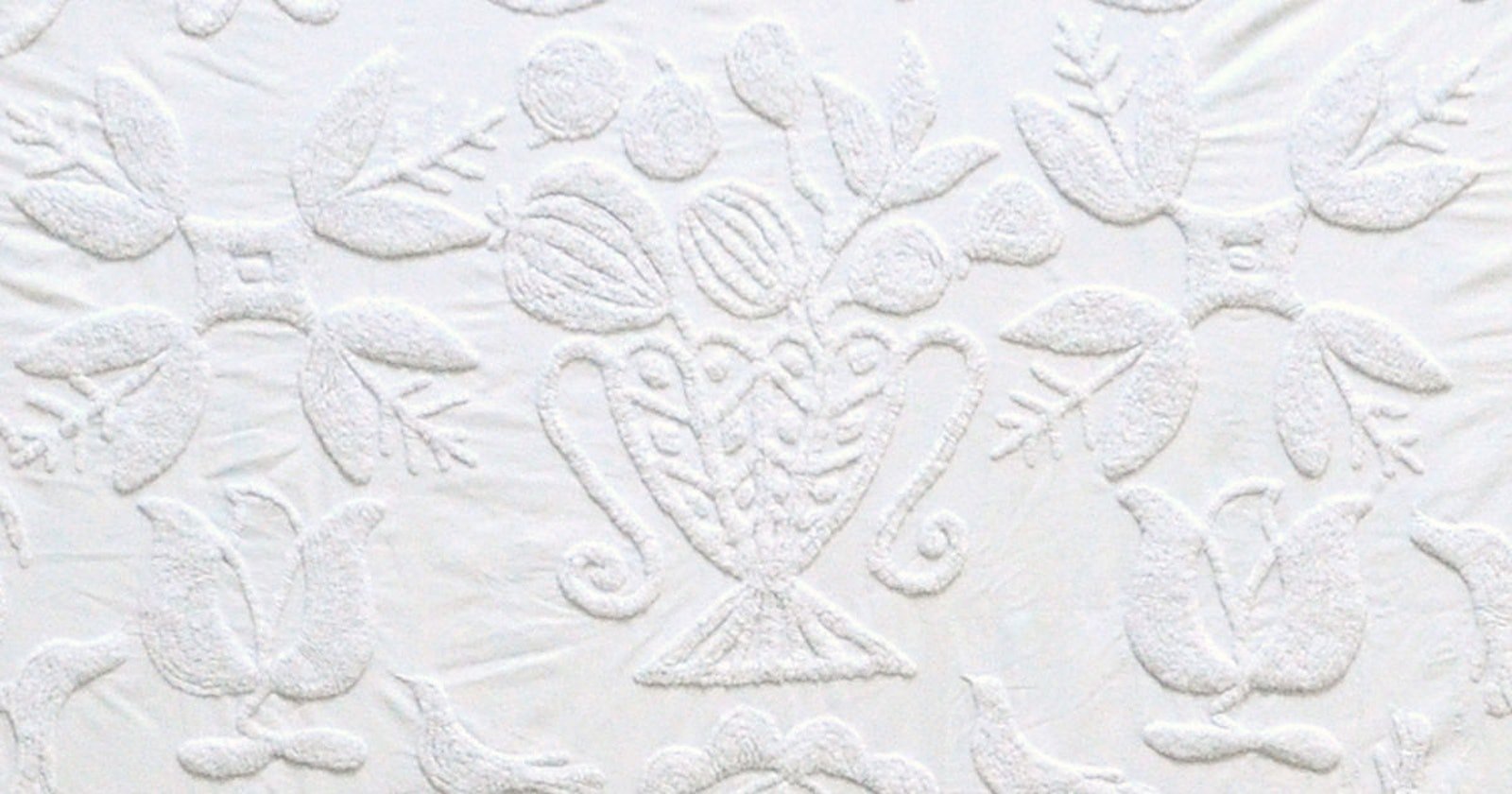While reading the excellent book The Girls of Atomic City for my book club, I was surprised to see a sentence casually mentioning that Georgia was once a hub of chenille production. Now when I say chenille, I don't mean the fuzzy, wonderful yarns weavers love for scarves; in this instance, I'm referring to cloths wherein designs are produced with bits of carefully placed pile. As a lover of chenille bedspreads, I made a mental note to look further into Georgia and its place in textile history when I was finished reading.
Apparently, there was a time when there was a stretch in northern Georgia along Highway 41 known as Peacock Alley. This delightful name came from the thriving local chenille industry. Locals "turfers" (as the chenille artisans would call themselves) would display their goods, usually bedspreads, on clothes lines along the road. The most common (and popular) design was, as you may have guessed by now, the peacock.
The popularity of chenille bedspreads and the technique itself can be traced back to a woman named Catherine Evans Whitener. As a girl, she became enamored with a candlewick-tufted quilt at a relative's house. Nobody knew how the design was made, so young Catherine studied the cloth and devised her own technique for creating the tufted patterns. To create the tufts Catherine sewed a running stitch using a thick, cotton yarn in her desired design. Then she'd snip the yarn causing it to fluff out and wash it all in hot water to shrink the fabric and lock in the tufts.
Tufted carpets sold in the United States, like the ones shown here, can trace their roots back to Dalton, Georgia and Catherin Evans Whitener. Photo by Quadell
She finished her first quilt in 1895 at the age of 15 as a gift for her brother's wedding. Her relatives loved the quilt so much they put in orders and eventually the public caught wind of these fabulous bedspreads. Eventually, demand grew so much she hired local women and trained them in this technique. This, in turn, led to her founding the Evans Manufacturing Company in Dalton, Georgia.
As more companies got in on the chenille craze, more people in the area learned this technique and eventually somewhere around 10,000 folks—mostly women—were involved in the chenille industry. It wasn't long before chenille production was down to a science: women would prepare sheets with stamped or drawn designs, those sheets delivered by "haulers" to the homes of "tufters" along with the appropriate yarns to be sewn. The tufters would fill in the designs and clip the yarns appropriately and then the haulers would pick up the tufted textiles and then take them back where they would be wet-finished. The industry grew and one could buy not just chenille bedspreads, but chenille robes, pillows, and much, much more.
The chenille industry helped many families earn a living throughout the Depression and even created a textile boom in Dalton, Georgia. Eventually, this cottage industry moved into factories, and as so often happens, handtufters were eventually replaced by tufting machines. Interestingly enough, the technique of tufting was eventually applied to carpets manufacturing with resounding success and Dalton became both the chenille and the carpet capital of the world. In fact, today some 45% of carpets sold in the United States are made within 65 miles of Dalton and most of those are still made using the basic tufting method developed all those years ago by Catherine Evans Whitener.
Happy Weaving! Christina


